Japanify: Winter Root Nimono

For some, winter may mean honey-baked hams and Santa Claus. But at my house, it means nimono. Nimono simply means "simmered things" in Japanese. You can pretty much simmer anything, but the simmering liquid is usually a combination of dashi, mirin and soy sauce.
I was happy to find some very wintry root vegetables at my local market. The quality was fresh with in-season prices.
It is sometimes intimidating to cook unfamiliar vegetables for the first time. You, of course, need to know how to cook it, but you also need to know how to peel it. To absorb maximum flavor in the simmering dashi -- carrots, daikon, etc. need to be peeled before thrown into the pot.
Coming home to a simmering pot of nimono is probably the most welcoming thing for the tired and weary. The aroma of nimono is the equivalent of the word "Okaerinasai!" or "Welcome home!"
INGREDIENTS
4 cups dashi
3 tbsp shoyu
3 tbsp mirin
1 tbsp sesame oil
1 tsp sugar
1 tsp salt
1-2 carrots
1 renkon (lotus root; approx 6-7 inches)
6-8 satoimo (taro root)
Handful of shiitake mushrooms
Julliened ginger
1/2 lb Pork shoulder sliced
1. Gather, peel and clean veggies.
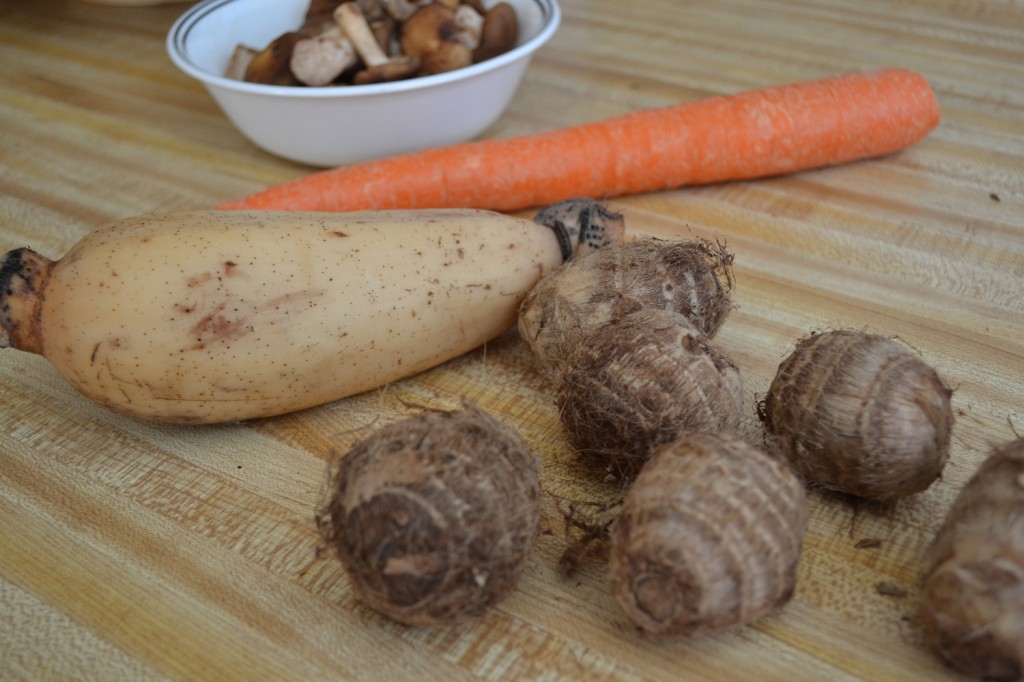
2. For the satoimo
Clean and scrub:

Cut off the ends:
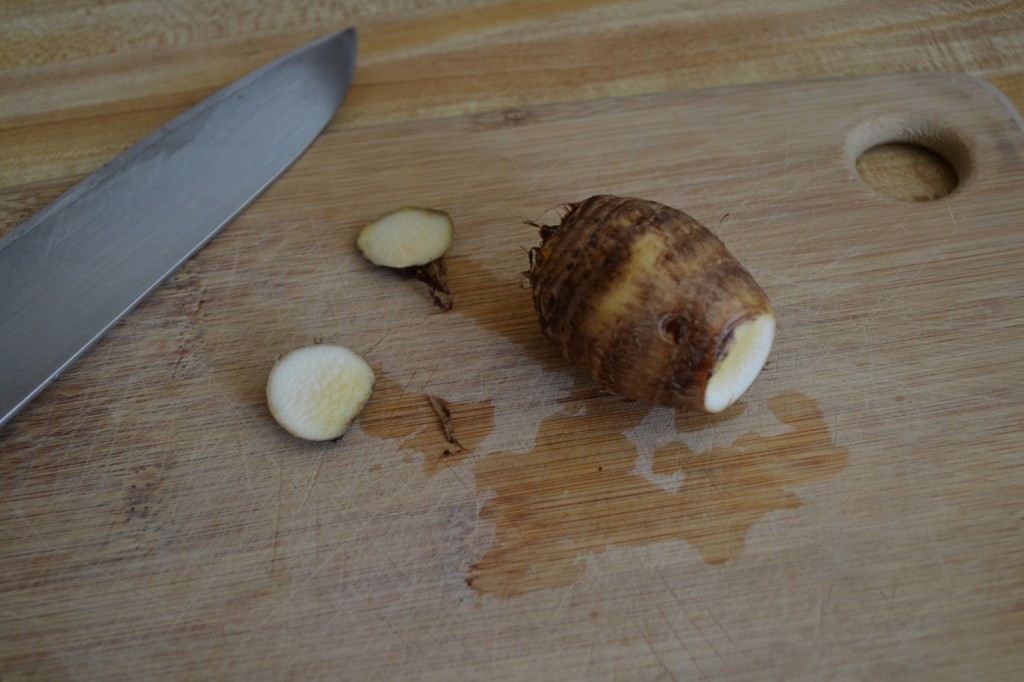
Peel the skin into a hexogonal shape:

Wash off the imo, they are a little slimy:
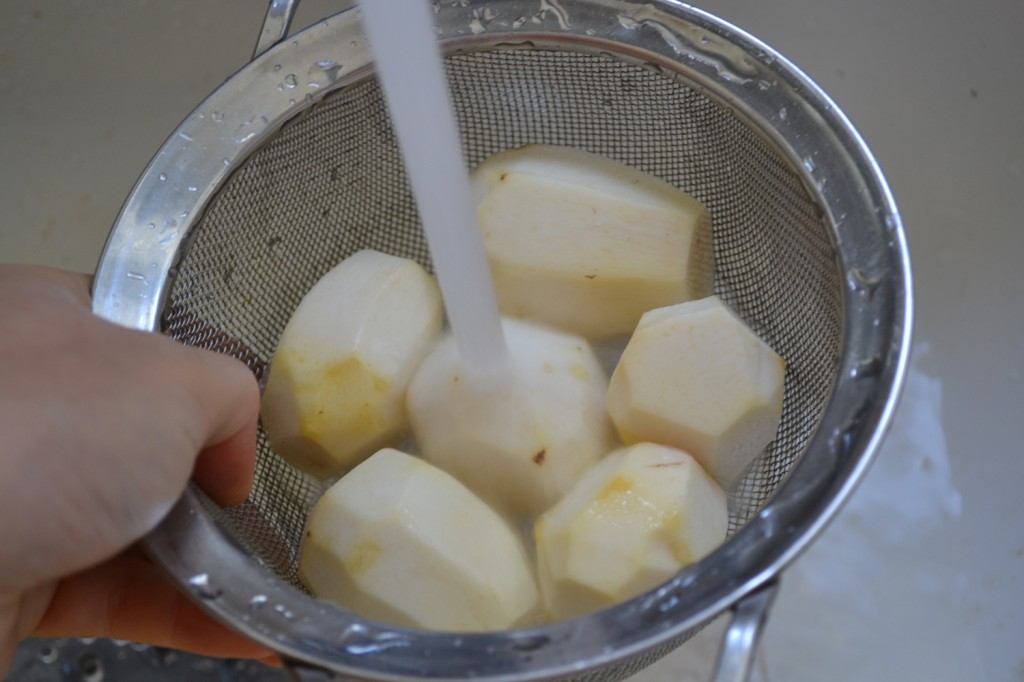
Cut into thirds:
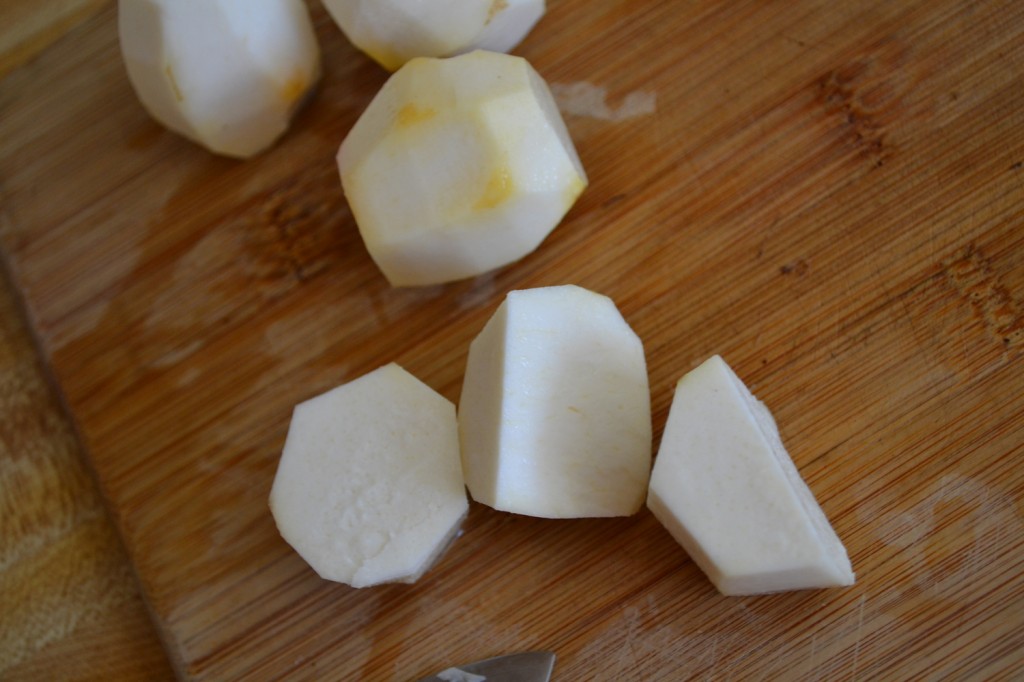
Coat with salt and massage them:


3. For the renkon
Cut off ends:
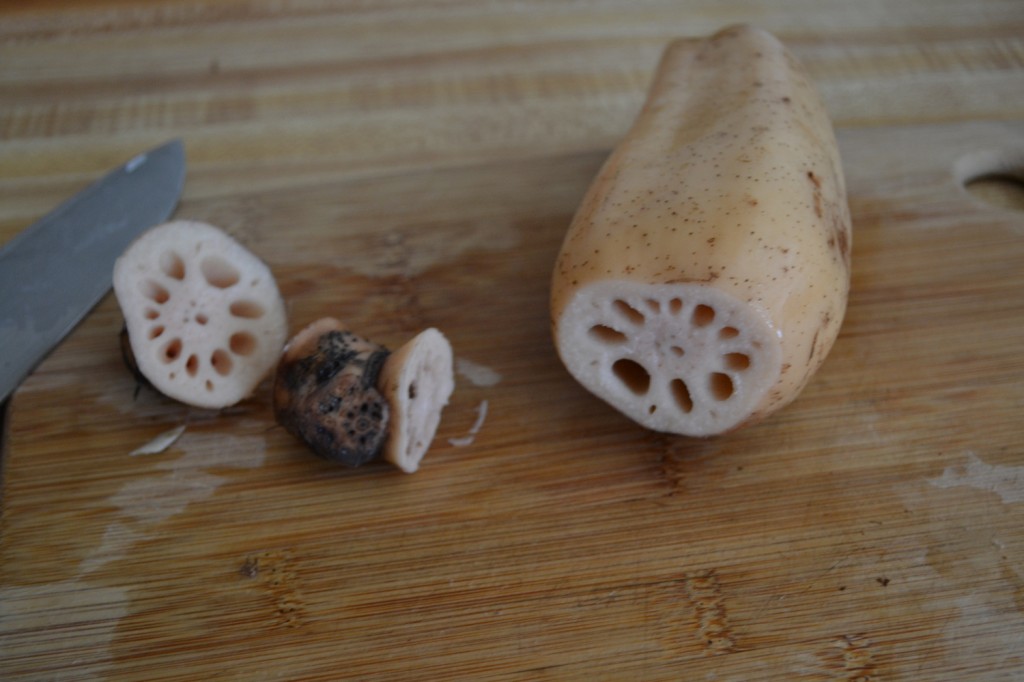
Peel the skin off with a vegetable peeler:
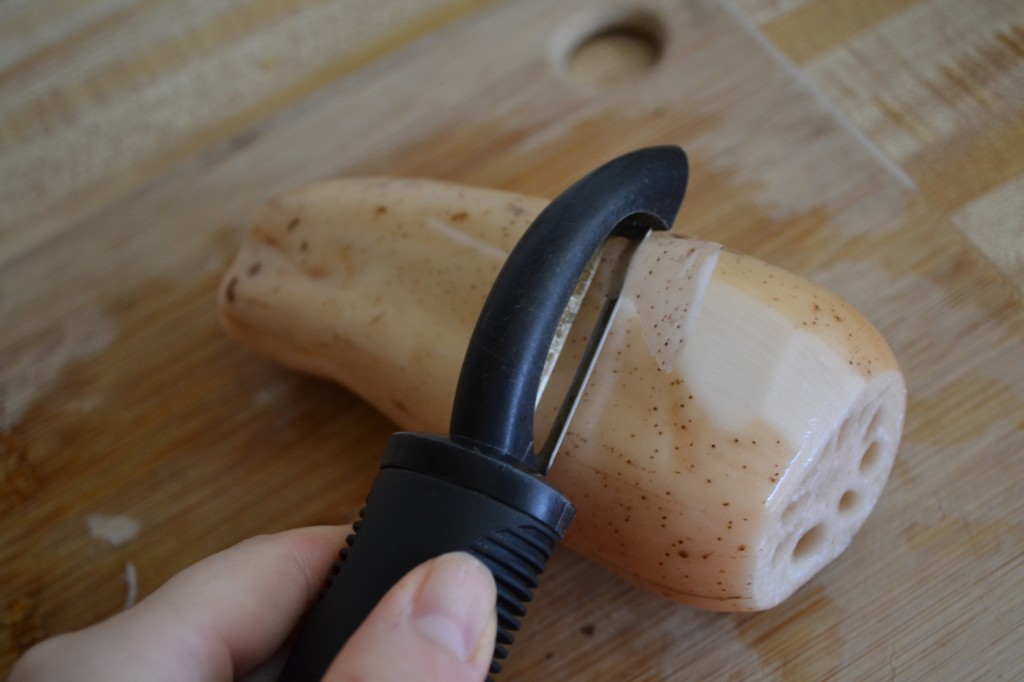
Cut into 1/3" coins:

4. Add sesame oil into pot, heat on med-hi
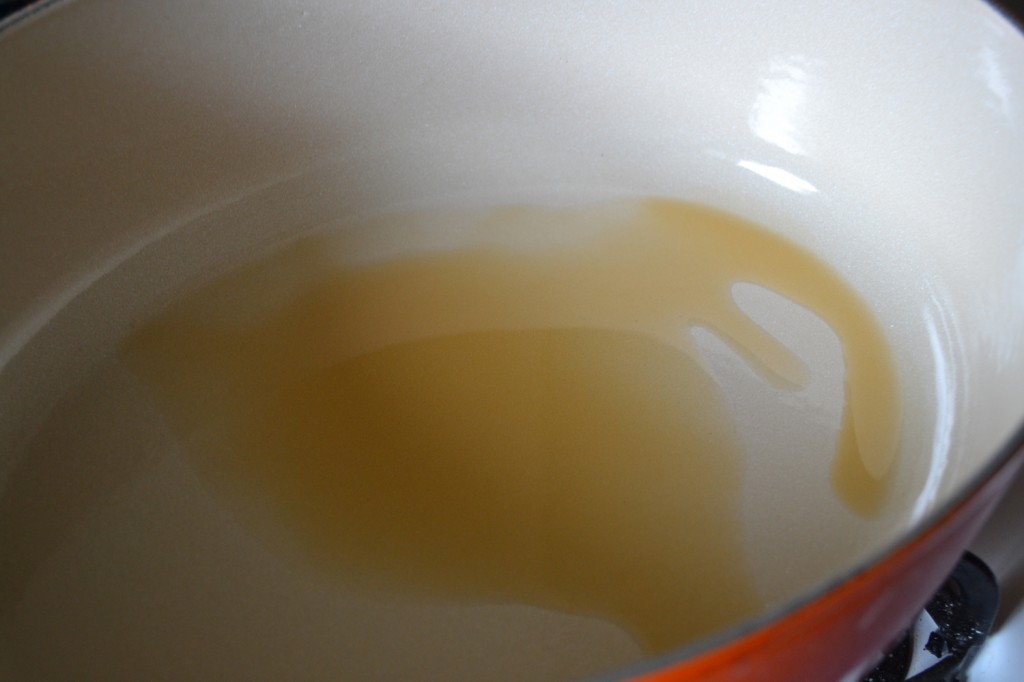
5. Once hot, add satoimo and sugar
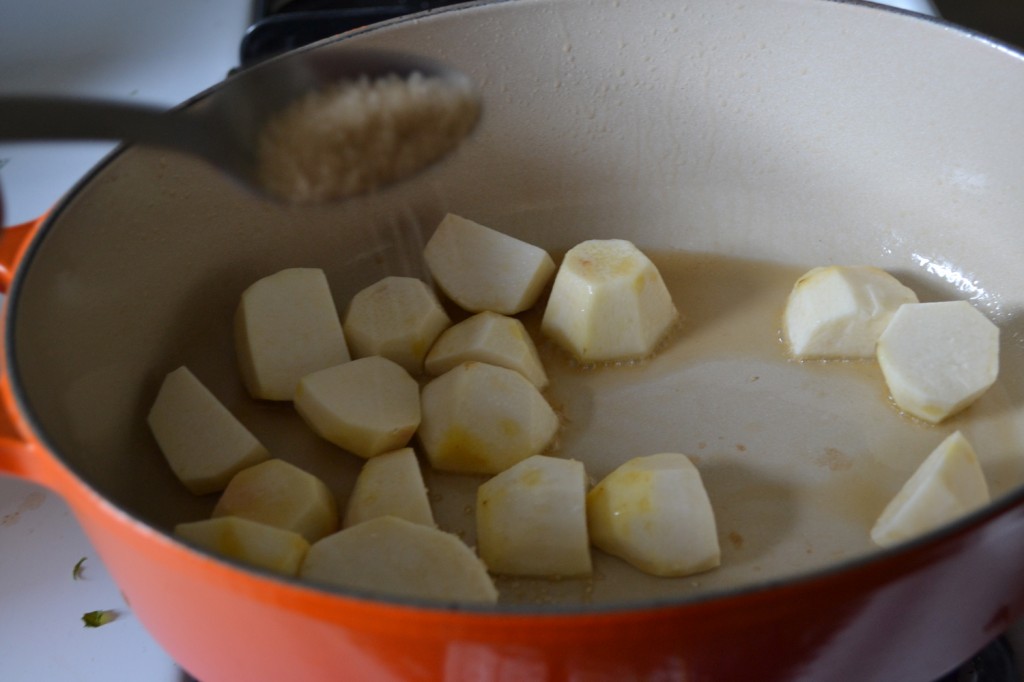
6. Add other vegetables.
7. Add soy sauce and mirin and mix well.
8. Add the dashi

9. Add meat and ginger.

10. Place otoshibuta on top and simmer on low for 20-30 minutes.

11. Et voila!

わぁ〜!Wahh!

ホカホカ! Hoka-hoka!!
